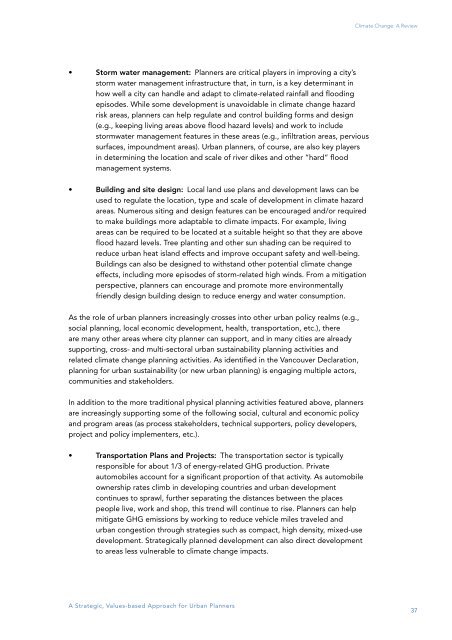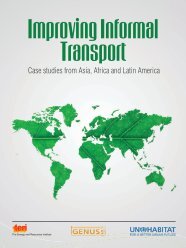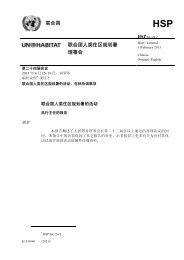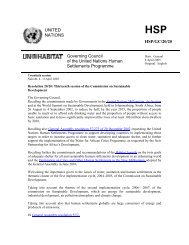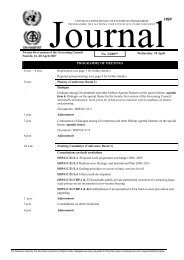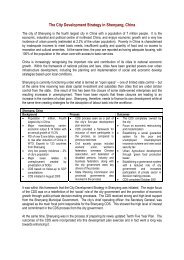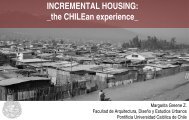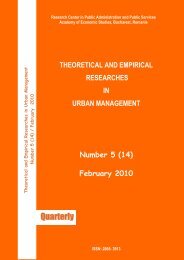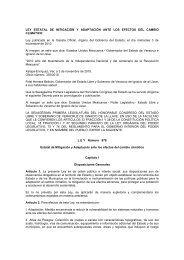Planning for Climate Change - UN-Habitat
Planning for Climate Change - UN-Habitat
Planning for Climate Change - UN-Habitat
You also want an ePaper? Increase the reach of your titles
YUMPU automatically turns print PDFs into web optimized ePapers that Google loves.
<strong>Climate</strong> <strong>Change</strong>: A Review<br />
<br />
<br />
Storm water management: Planners are critical players in improving a city’s<br />
storm water management infrastructure that, in turn, is a key determinant in<br />
how well a city can handle and adapt to climate-related rainfall and flooding<br />
episodes. While some development is unavoidable in climate change hazard<br />
risk areas, planners can help regulate and control building <strong>for</strong>ms and design<br />
(e.g., keeping living areas above flood hazard levels) and work to include<br />
stormwater management features in these areas (e.g., infiltration areas, pervious<br />
surfaces, impoundment areas). Urban planners, of course, are also key players<br />
in determining the location and scale of river dikes and other “hard” flood<br />
management systems.<br />
Building and site design: Local land use plans and development laws can be<br />
used to regulate the location, type and scale of development in climate hazard<br />
areas. Numerous siting and design features can be encouraged and/or required<br />
to make buildings more adaptable to climate impacts. For example, living<br />
areas can be required to be located at a suitable height so that they are above<br />
flood hazard levels. Tree planting and other sun shading can be required to<br />
reduce urban heat island effects and improve occupant safety and well-being.<br />
Buildings can also be designed to withstand other potential climate change<br />
effects, including more episodes of storm-related high winds. From a mitigation<br />
perspective, planners can encourage and promote more environmentally<br />
friendly design building design to reduce energy and water consumption.<br />
As the role of urban planners increasingly crosses into other urban policy realms (e.g.,<br />
social planning, local economic development, health, transportation, etc.), there<br />
are many other areas where city planner can support, and in many cities are already<br />
supporting, cross- and multi-sectoral urban sustainability planning activities and<br />
related climate change planning activities. As identified in the Vancouver Declaration,<br />
planning <strong>for</strong> urban sustainability (or new urban planning) is engaging multiple actors,<br />
communities and stakeholders.<br />
In addition to the more traditional physical planning activities featured above, planners<br />
are increasingly supporting some of the following social, cultural and economic policy<br />
and program areas (as process stakeholders, technical supporters, policy developers,<br />
project and policy implementers, etc.).<br />
<br />
Transportation Plans and Projects: The transportation sector is typically<br />
responsible <strong>for</strong> about 1/3 of energy-related GHG production. Private<br />
automobiles account <strong>for</strong> a significant proportion of that activity. As automobile<br />
ownership rates climb in developing countries and urban development<br />
continues to sprawl, further separating the distances between the places<br />
people live, work and shop, this trend will continue to rise. Planners can help<br />
mitigate GHG emissions by working to reduce vehicle miles traveled and<br />
urban congestion through strategies such as compact, high density, mixed-use<br />
development. Strategically planned development can also direct development<br />
to areas less vulnerable to climate change impacts.<br />
A Strategic, Values-based Approach <strong>for</strong> Urban Planners<br />
37


